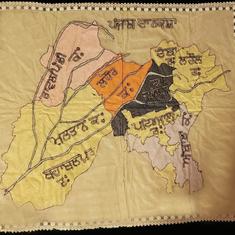Child sex ratio, which shows the number of girls per 1000 boys between the ages 0-6, came down to 918 for India in 2011 from 927 in 2001, according to the latest data.
Given India’s abysmal record in the past with regards to reining in the cases of female foeticide, the latest Census numbers cast a shadow on the efficacy of different measures to educate and incentivise people to not prefer sons over daughters. With just 918 girls per 1000 boys, the child sex ratio has reached its lowest levels in the country since 1961.
All except two religious communities saw a decline in their child sex ratio between 2001-2011. Sikhs recorded a tremendous rise in the population of girls in their community as the sex-ratio climbed from a laggardly 786 to 828 in a matter of 10 years while Jains also recorded a rise from 870 to 889 girls per 1000 boys in the community.
Hindus, who make up 80% of the population of the country, saw their child sex ratio come down from 925 to 913 between 2001-2011, in line with Muslims, Christians and Buddhists.
Interestingly, an unusually healthy sex-ratio of 974 girls per 1000 boys was recorded amongst people hailing from other faiths and practices except the major religions in the country.
Rural-urban divide
The sex ratio figures, meanwhile, continued to display a healthier trend in rural areas of the country as compared to urban ones. Child sex ratio in rural areas according to the 2011 Census was 923 girls per 1000 boys while in urban areas it was a measly 905 which pulled down the nationwide ratio as well.
This was visible in the sex ratios for the entire population too, which actually improved over the figures seen in the previous census. In 2011, India’s general sex ratio, which takes into account men and women of all ages, stood at 943 females per 1000 males, which is an improvement over 2001’s figure of 933.
Here as well, rural areas had a better sex ratio of 949 females per 1000 males as compared to their urban counterparts where it was only 929 females.
Historically, however, general sex ratio has been steadily rising across urban and rural areas in the country for the last 20 years. This can be seen as a silver lining for now, even though there are fears that a declining child sex ratio poses a danger to the future population of women in the country as well.
“The decreasing sex ratio in this age group (0-6) has a cascading effect on population over a period of time leading to diminishing sex ratio in the country,” explains the Census of India website. “The magnitude of the decline can be seen by the fact that 31 States / UTs have registered a decline in Child Sex Ratio during 2001. One thing is clear – the imbalance that has set in at this early age group is difficult to be removed and will remain to haunt the population for a long time to come.”













